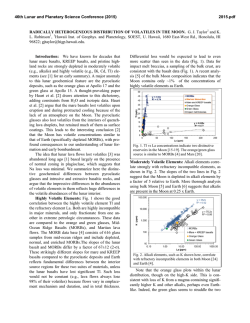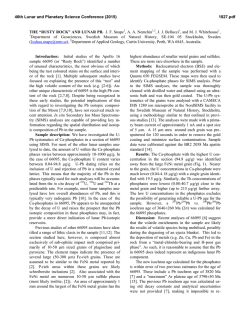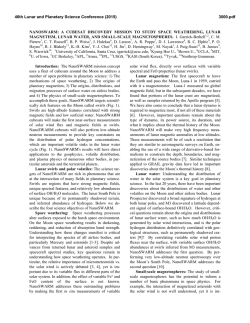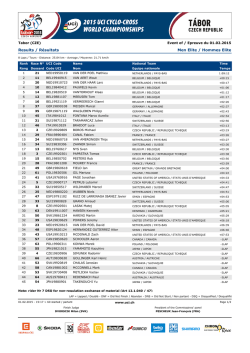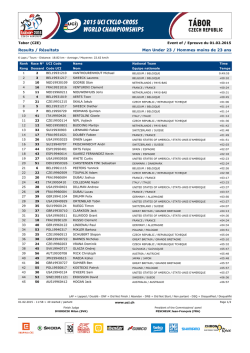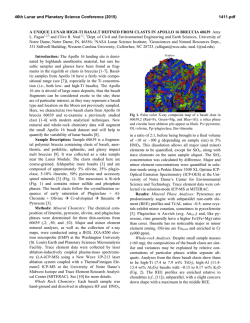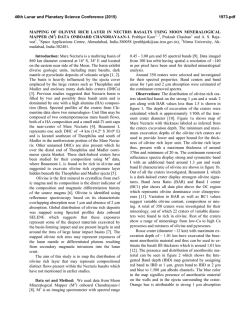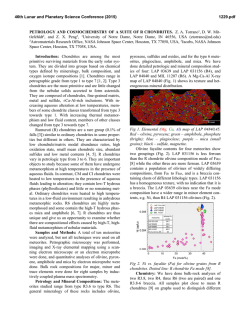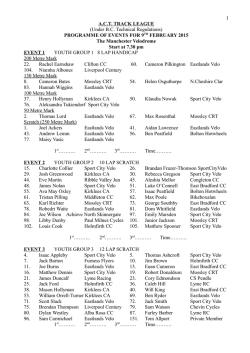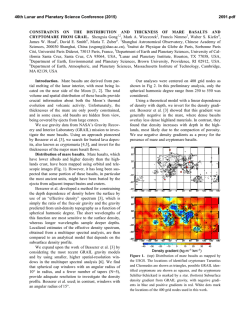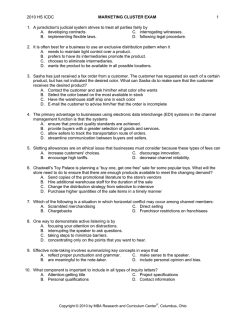
petrogenesis of primitive and evolved basalts in a cooling moon
46th Lunar and Planetary Science Conference (2015) 2155.pdf PETROGENESIS OF PRIMITIVE AND EVOLVED BASALTS IN A COOLING MOON: EXPERIMENTAL CONTRAINTS FROM THE YOUNGEST KNOWN LUNAR MAGMAS. S. M. Elardo1, 2, C. K. Shearer1, K. E. Vander Kaaden1, F. M. McCubbin1, and A. S. Bell1. 1Institute of Meteoritics, 1 University of New Mexico, MSC03-2050, Albuquerque, NM 87131, USA, 2Geophysical Laboratory, Carnegie Institution of Washington, 5251 Broad Branch Rd. NW, Washington, DC 20015, USA. [email protected] Introduction: The youngest known igneous samples from the Moon are a group of five unbrecciated basaltic lunar meteorites with contrasting geochemical characteristics and overlapping ages between 2.93 and 3.09 Ga [1–5]. Three of those five samples, NWA 032, NWA 4734, and LAP 02205 (and its pairings), have evolved geochemical characteristics, with nearly identical Fe- and incompatible trace element (ITE)-rich bulk compositions and a deep negative Eu anomaly. In light of their geochemical similarities, these three samples, although isotopically distinct, will be referred to here as the ‘LAP Group’ and represent essentially a single basaltic liquid composition in this study [5]. The fourth sample, NEA 003A, is a more primitive basalt, with a more Mg-rich composition than the LAP Group, essentially no Eu anomaly, and some of the lowest abundances of ITEs among all crystalline mare basalts. Previous studies [4–8] of the LAP Group and NEA 003A have shown that their bulk compositions are both close to magmatic liquid compositions. The fifth sample, NWA 773 and its parings, is a KREEP-rich cumulate gabbro [e.g., 9], so we do not focus on this sample in the present study. The LAP Group and NEA 003A are samples of basaltic flows from an era of lunar magmatism not represented in the Apollo/Luna sample collection and therefore make intriguing candidates for experimental study. At ~3 Ga, most thermal models of the lunar interior predict a cold upper mantle, with the lunar Moho as deep as ~150 km [10–12]. This condition would likely favor deeper melting and possibly the melting of lunar magma ocean (LMO) cumulates with a lower solidus temperature (i.e., more Fe- and ITE-rich) than the source regions for older mare basalts and picritic glasses. Radiogenic heat from the KREEP reservoir has been suggested as a heat source for melting [1, 13]. Despite these predictions, NEA 003A is a relatively primitive basalt with very low ITE abundances, suggesting a primitive source region. Additionally, despite high ITE abundances in the LAP Group, Elardo et al. [5] ruled out the involvement of KREEP in their petrogenesis, alternatively suggesting ITE enrichment from low-degree partial melting of Fe-rich LMO cumulates. We have conducted high-P-T experiments on synthetic NEA 003A and LAP Group liquid compositions to (1) assess the P-T-X conditions of melting and petrogenesis of the more primitive basalt NEA 003A, and (2) test models for the origin of the evolved LAP Group basalts. We combine these experimental results with constraints from the geochemical and isotopic compositions of these basalts, geochemistry of Apollo mare basalts and volcanic glasses, petrogenetic models of their origin, and thermochemical models of the lunar interior to gain a better understanding of basalt petrogenesis in the waning stages of lunar magmatism. Experimental and Analytical Methods: Ambient and high-pressure crystallization experiments were conducted on synthetic LAP Group and NEA 003A bulk compositions. 1-bar crystallization experiments were run in a Deltech vertical gas-mixing furnace at the University of New Mexico (UNM). The fO2 of the experiments was controlled using a gas mixture of COCO2, and was estimated to be within 0.2 log units of the IW buffer [14]. Starting materials were suspended in solution of polyvinyl alcohol and placed on Re0 wire loops. Experimental durations were from 19–24 hours and were quenched into water. High pressure experiments were conducted in the 13 mm Depths of the Earth QUICKpress at UNM. Pressure calibration information can be found in [15]. Iron was added to the experimental starting materials using synthetic fayalite such that Fe2+/ƩFe = 1, and experiments were run in graphite capsules within anhydrous salt-Pyrex cells. Therefore, we expect the fO2 of the experiments to have been near the IW buffer. MgO inner parts were dried at 800 °C in a box furnace before being stored in a 105 °C desiccated drying oven under vacuum before use, and experimental starting materials were stored in the same drying oven. These steps were taken to minimize unwanted water in the experiments. Temperature was monitored with a type-B thermocouple. Experimental durations were between 19 and 70 hours. Run products were analyzed for major and minor elements with the JEOL JXA 8200 electron microprobe at UNM using a 30 nA beam current and a 15 kV accelerating voltage. Results: The results of phase equilibrium experiments on NEA 003A and the LAP Group bulk compositions are shown in Fig. 1. NEA 003A has olivine on its liquidus at ambient pressure, 0.4, 0.8, and 1.3 GPa. At 1.5 GPa, low-Ca pyroxene is the liquidus phase and remains the sole silicate at 1.5 GPa for at least 90 °C down temperature. These results indicate that the NEA 003A composition is multiply saturated with olivine 46th Lunar and Planetary Science Conference (2015) Fig. 1: Results of low- and high-pressure phase equilibrium experiments on the NEA 003A bulk composition (a) and the LAP Group bulk composition (b). MSP = Multiple Saturation Point. (Fo73) and low-Ca pyroxene (En70Wo6) at ~1.4 GPa and ~1340 °C. This pressure corresponds to a depth of ~280 km in the lunar mantle. The LAP Group bulk composition has olivine as its liquidus phase at ambient pressure and ~1160 °C. Olivine is followed by low-Ca pyroxene and plagioclase appearing simultaneously at ~1090 °C. At 0.4 GPa, low-Ca pyroxene replaces olivine as the liquidus phase, and is joined by plagioclase ~30 °C down temperature. These results indicate that the LAP Group bulk composition is multiply saturated with olivine (~Fo 63) and low-Ca pyroxene (~En58Wo10) at <0.4 GPa and between 1150 – 1200 °C. This pressure corresponds to a depth of <80 km within the lunar interior. Discussion: The results of phase equilibrium experiments on basaltic lunar meteorites NEA 003A and the LAP Group offer insight into mantle melting and the petrogenesis of primitive and evolved basalts at 3 Ga, a time when magmatism on the Moon was waning. NEA 003A, which is multiply saturated with olivine and lowCa pyroxene at a pressure corresponding to ~280 km depth within the lunar mantle, has the deepest known multiple saturation point (MSP) of any mare basalt liquid composition, and is within the depth range of the MSPs for the lunar picritic glasses [16]. 2155.pdf We argue for two possible models for the origin of NEA 003A. The first possibility, given its primitive geochemical characteristics, is that NEA 003A is a near-primary melt derived from a source region at ~280 km depth that formed from the LMO before plagioclase saturation and escaped hybridization with later stage LMO cumulates during mantle overturn. This explains the lower Mg# of NEA 003A and its lack of a negative Eu anomaly, which contrasts with the more primitive Mg# of the ultramafic volcanic glasses that almost ubiquitously have a negative Eu anomaly. Alternatively, NEA 003A may be the product of some fractional crystallization of a more primitive parental melt derived from >280 km. This would place the source region of the NEA 003A parental melt well below the depths of other crystalline mare basalt sources and within the depth range for the sources of the ultramafic glasses. Although both models suggest that the shallowest extents of melting moved deeper with time, there is little direct evidence among other mare basalt MSP data to offer broader support for this supposition. The geochemically evolved LAP Group basalts have an MSP at <80 km depth. However, models of the lunar interior predict a thick elastic lithosphere of ~150 km at 3 Ga [10–12]. Our results imply an unreasonably hot upper mantle at ~80 km if the model of direct partial melting of evolved, Fe-rich late-stage LMO cumulates proposed by Elardo et al. [5] is correct. Rather, these data support the model that the LAP Group basalts are the product of extensive fractional crystallization [e.g., 17]. However, given that Elardo et. al. [5] argued against KREEP being the source of the high ITE abundances in the LAP Group basalts, the contribution of a component of late-stage LMO cumulates to the source region LAP Group is required to explain their ITE abundances and elemental fractionations [5]. Based on fractional crystallization calculations designed to reconstruct possible parental liquids to the LAP Group liquids, Apollo 12 and 15 basalts 12002 and 15016 represent reasonable analogs to the LAP Group parental magmas. References: [1] Borg et al. (2004) Nature 432, 209–211. [2] Rankenburg et al. (2007) GCA 2120–2135. [3] Borg et al. (2009) GCA 3963–3980. [4] Haloda et al. (2009) GCA 3450–3470. [5] Elardo et al. (2014) MaPS 49, 261–291. [6] Fagan et al. (2002) MaPS 371–394. [7] Day et al. (2006) GCA 1581–1600. [8] Zeigler et al. (2006) MaPS 1073–1101. [9] Jolliff et al. (2003) GCA 4857–4879. [10] Parmentier and Hess (1998) LPSC #1182. [11] Hess and Parmentier (2001) JGR-P, 28,023–28,032. [12] Laneuville et al. (2013) JGR-P, 1435–1452. [13] Wieczorek and Phillips (2000) JGR-P, 20,417–20,430. [14] O'Neill and Pownceby (1993) Contrib. Min. Pet., 296–314. [15] Vander Kaaden et al. (2015) GCA 149, 1–20. [16] Longhi (1992) GCA 56, 2235–2251. [17] Day et al. (2006) GCA 70, 1681–1700.
© Copyright 2026


